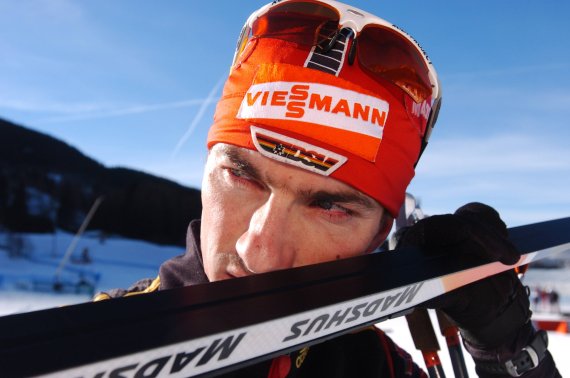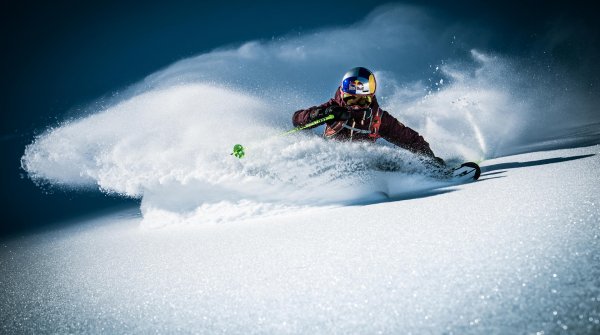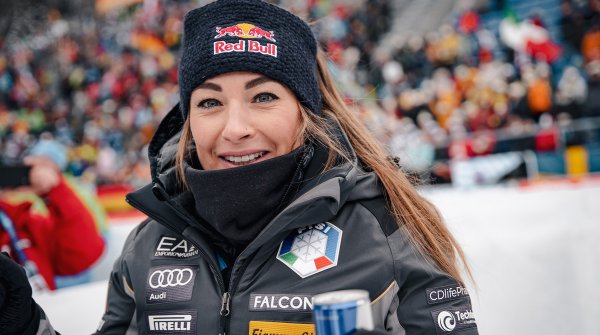
For many hobby cross-country skiers, waxing skis is the unpleasant part of enjoying winter sports. One way to completely avoid the tiresome activity is the ski skin, a development from the touring ski sector where (braking) hide under the ski has always helped with the ascent of the mountain. They are then easy to remove on the descent.
In cross-country skiing, the synthetic skins are firmly attached under the grip area of the skis: The hairs form a barrier and thus provide a stop on the ascent, while on the descent they flow smoothly in one direction, allowing for a quick race down into the valley.
For the normal consumer, things are going completely in the direction of ski skins. It always fits, whether cold or warm, fresh or artificial snow. “You should care only for the fur from time to time. If you like, you can apply a little paraffin to the front and back of your skis – then you’re done,” says Rene Sommerfeldt in an interview with ISPO.com.
Even the material nerds in the German national cross-country skiing team are checking if and how the ski skin technology can be utilized for the competitive sector.

Even for the absolute experts, ski waxing is a science in its own right, a science in which the competitive sports sector invests millions in the fight for medals. Up to twelve different skis are tested for each top runner before the competition. Nevertheless, even the greatest gurus “miswax” again and again.
Because nuances are important in at the top and, in addition to wax, the grinding of the ski tread and the structure also play an important role. For example, when running in wet snow, the cut and structure needs to be quite coarse so the water can drain off well.
Touring cross-country skiers, who often only have one pair of skis tucked away in their cellar, doesn’t need to worry about all that. What’s important to them above all is the style in which they train: classic or skating. The latter is substantially easier to wax.
Sommerfeldt: “You apply the paraffin, let it get cold after pressing it on with the flatiron, clean the groove, and sand the topmost layer back down with the blade. Then brush it out and the ski is ready.” There’s paraffin glide wax for all kinds of temperature ranges, usually labelled with the same colors: cold (blue), universal (red), and warm/wet (yellow).

When preparing a classic ski, which normally should be ten to fifteen centimeters longer than the skating skis for the same person, more effort becomes necessary. Here, the grip zone needs to be waxed separately. To find out where this zone is for the first time, lay a sheet of paper under the ski on a smooth table.
“Then see how far the ski can shift and make two dashes with an Edding pen on the tread – precisely there is the grip zone. The back dash shouldn’t go beyond the binding plate,” says Sommerfeldt.
Top 10: These are the most successful Nordic ski stars on Instagram
When it comes to waxing, first and foremost, the entire tread needs to be made as fast as possible - like the skating ski with paraffin. Then you bring most of it back down again and roughen up the grip zone with fine sandpaper.
Then the grip wax gets applied - in warm-wet conditions, people make more use of the sticky klister, while harder waxes matching the color theory are used in cooler climates.
Those looking to learn more about waxing the perfect cross-country ski should attend a wax seminar, offered by skiing schools in several winter sports locations or even by manufacturers like Swix, Toko, or Holmenkol. If all that seems too complicated, you should probably stick to ski skins…
 PeopleBetween soaring and crashing
PeopleBetween soaring and crashing
- ISPO awards
- Mountain sports
- Bike
- Design
- Retail
- Fitness
- Health
- ISPO Job Market
- ISPO Munich
- ISPO Shanghai
- Running
- Brands
- Sustainability
- Olympia
- OutDoor
- Promotion
- Sports Business
- ISPO Textrends
- Triathlon
- Water sports
- Winter sports
- eSports
- SportsTech
- OutDoor by ISPO
- Heroes
- Transformation
- Sport Fashion
- Urban Culture
- Challenges of a CEO
- Trade fairs
- Sports
- Find the Balance
- Product reviews
- Newsletter Exclusive Area
- Magazine
























